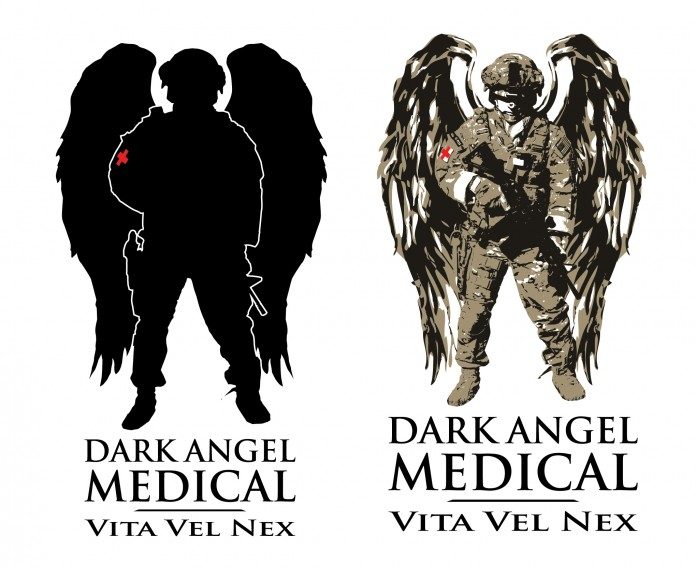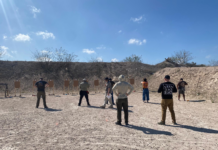
By: Kerry “Pocket Doc” Davis, Owner Dark Angel Medical LLC., – MASF Member
Originally Published in MASF Quarterly Online Magazine Fall 2015 issue
The shooting community is a very selective group. Whether it’s training courses, firearms, optics, ammo, accessories or other gear, we feel strongly about what we like, and conversely, what we don’t like.
However, we all have one thing in common. We all want the best of the aforementioned to achieve success in a dire situation. There are a large number of us who spend quite a bit of money and time on all of the latest and greatest and put quite a few rounds downrange into paper every year in order to become more proficient with our chosen system.
While we train for the worst-case scenario in shootings, we should also place that same emphasis, if not more, on medical training and train for those types’ worst-case scenarios. Proficiency with an individual med kit can be just as life-saving as can proficiency with a firearm. Unfortunately, there has not been a great deal of emphasis on this vital component of training. It seems as though it has been the “missing link” in the shooting community. A quick internet search to look at the number of emergency medical courses available for shooters versus the number of shooting courses will tell the tale. But, playing “Devil’s Advocate”, “Is a medical course for shooters really necessary?” That question can be countered by several other questions.
we train for the worst-case scenario in shootings, we should also place that same emphasis, if not more, on medical training and train for those types’ worst-case scenarios. Proficiency with an individual med kit can be just as life-saving as can proficiency with a firearm. Unfortunately, there has not been a great deal of emphasis on this vital component of training. It seems as though it has been the “missing link” in the shooting community. A quick internet search to look at the number of emergency medical courses available for shooters versus the number of shooting courses will tell the tale. But, playing “Devil’s Advocate”, “Is a medical course for shooters really necessary?” That question can be countered by several other questions.
What if that bullet happens to punch flesh and not paper? What if you were on the scene of a mass casualty incident? What if your partner got stung by a bee during routine surveillance? What if your child put their arm through a plate glass window while chasing a ball? What if you came upon the scene of a serious motor vehicle accident? What if you didn’t drink enough water on a hot training day practicing entries over and over?

That’s a lot of what-if’s, but those what-if’s are no different in gravity than the what-if’s we train for on the range; the unexpected, the worst.
Basic emergency medical training should be a skill set which every shooter obtains prior to a basic firearms fundamentals class. It should cover the full spectrum of basic, lifesaving skills, not just gunshot wounds as not every casualty is the result of a bullet. Its importance cannot be emphasized enough. Like shooting, it’s a perishable skill.
Emergency medicine is as constantly evolving as firearms and tactics and we would serve ourselves and our community well by keeping our minds open. Newer, better and more efficient techniques designed to save lives are continually being developed. It is our responsibility to learn as much as possible and improve our skills both with our firearms and our first aid kits and practice with every given chance.
Once a life-threat ening encounter has passed, we are then faced with the task of attempting to fix with tourniquets, hemostatics and gauze what has been punctured by bullets or broken and torn by the ragged steel and shattered glass of a wrecked automobile. Proficiency through practice will increase our ability to emergently render first aid to ourselves or others in that type situation without freezing.
ening encounter has passed, we are then faced with the task of attempting to fix with tourniquets, hemostatics and gauze what has been punctured by bullets or broken and torn by the ragged steel and shattered glass of a wrecked automobile. Proficiency through practice will increase our ability to emergently render first aid to ourselves or others in that type situation without freezing.
Ultimately, the long and short of honing our skills is quite simply, survival. Medical training, like firearms training, can improve our short-term survivability while we wait for law enforcement or EMS to arrive on scene. Proper training and, more importantly, proper mindset are keys to that survival. It makes us more self-sufficient and an asset to society rather than a liability.
Hopefully, we will never have to draw our firearm in self-defense, just as we may never have to employ our individual med kit to staunch the flow of blood. But, proper training in either modality is the key to a successful outcome
We must train for the worst that can happen before, during and, especially, after the gunfire.
SOURCE ARTICLE: http://masf.co/2016/02/12/the-missing-link/



